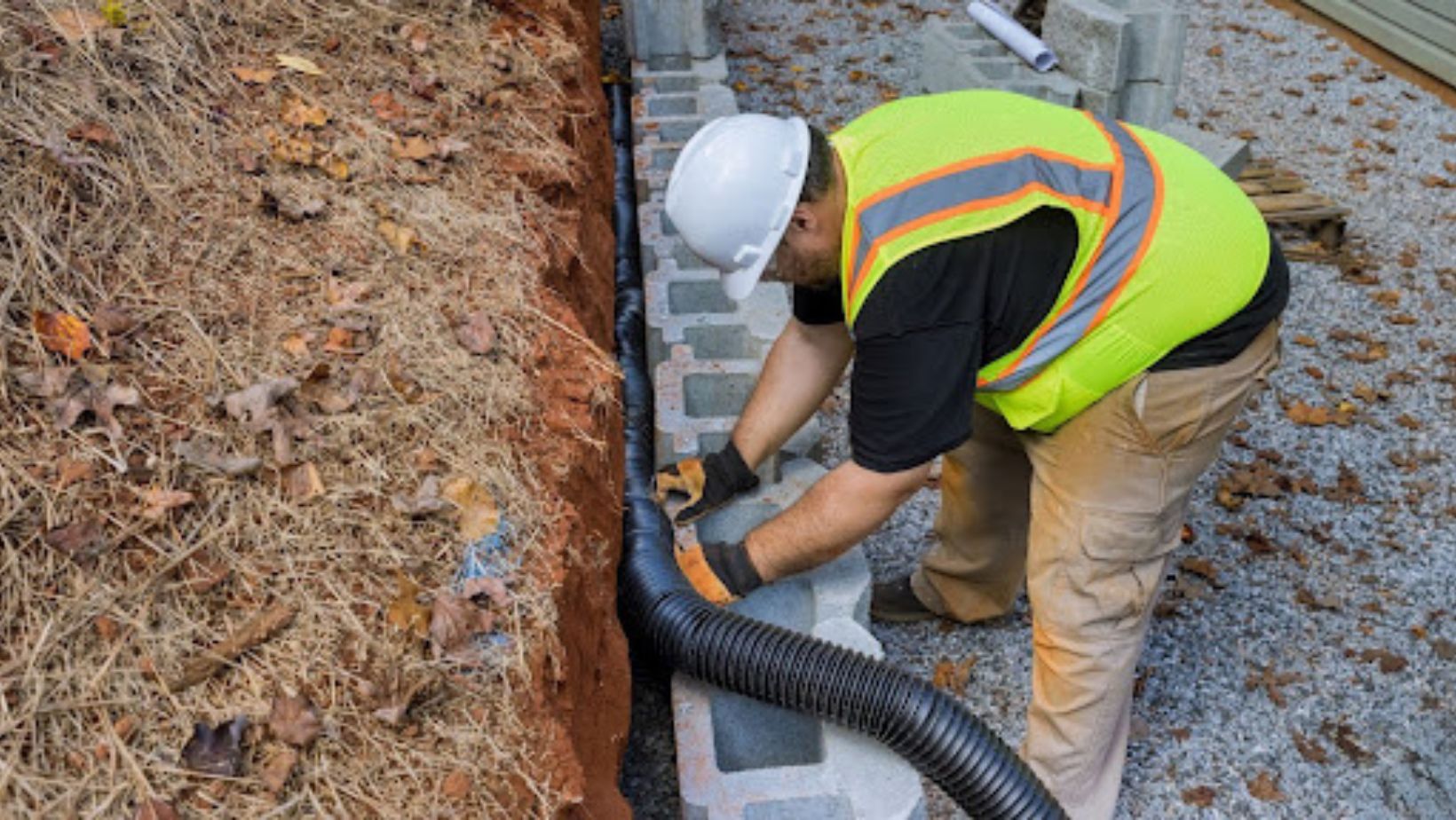Ensuring the health and longevity of your outdoor spaces hinges significantly on impeccable landscape design, with proper drainage holding a pivotal role. Efficiently functioning drainage systems manage surplus water to forestall issues like erosion, waterlogging and soil compaction. If you direct water away from the foundation of your property as well as other vulnerable areas, not only will you safeguard investments in landscaping but also forge an environment more functionally superior and visually appealing outdoors.
Assessing Your Property’s Drainage Needs
Assessing the unique drainage needs of your property stands as an essential task before you implement any drainage solutions. To identify areas prone to water accumulation or runoff, evaluate factors such as topography, soil type and existing drainage patterns. Additionally, consider slope grading; water flow may be impacted by elements like downspouts’ locations, driveways and landscaping features – all critical factors for effective management of surface runoff on your land. Understanding the drainage challenges of your property empowers you to devise bespoke solutions that effectively address them.
Implementing Surface Drainage Techniques
Designers develop surface drainage techniques to control water runoff and avert surface pooling or flooding. These strategies commonly encompass grading, a method that sculpts the land in such a way as to encourage water flow away from structures and other vulnerable areas. In addition, redirecting water can be effectively achieved through swales, channels, or French drains towards designated drainage points or natural watercourses. Incorporate these techniques into your landscape design: they can mitigate the risks of water-related damage and erosion.
Using Sub Compact Tractor for Drainage Projects
Excavation, grading, and the installation of drainage components may be necessary to implement drainage solutions; these tasks can efficiently utilize a sub compact tractor. Equipped with versatile attachments such as backhoes, loaders–and trenchers: sub-compact tractors are maneuverable machines ideal for an extensive range of landscaping and drainage projects.
Digging trenches for drain pipes; grading slopes—or even moving soil and debris—all these tasks that a sub-compact tractor expertly accomplishes: it streamlines your installation process while ensuring precise efficiency in results.
Installing Subsurface Drainage Systems
Subsurface drainage systems: known as French drains or tile drains, and equipped with perforated pipes–significantly mitigate excess groundwater and soil moisture; they work in tandem with surface drainage. To redirect water from problematic areas, we install these pipes beneath the ground. Typically encompassed by gravel or rock for enhanced water infiltration–and to deter clogging–this strategy is an effective solution. Areas with high water tables or clay soils prone to water retention particularly benefit from subsurface drainage systems.
Utilizing Retaining Walls And Berms
In landscape design, retaining walls and berms carry out a dual function: they not only enhance aesthetic appeal but also provide effective drainage solutions. Retaining walls–by stabilizing slopes, preventing erosion, creating level terraces for planting beds or outdoor living areas–prove indispensable; furthermore when one incorporates drainage elements such as weep holes or French drains into them–water runoff management becomes efficient while preventing hydrostatic pressure build-up behind the structure. We can also utilize berms – these are raised mounds of soil – to redirect water flow and establish natural landscape contours.
Integrating Rain Gardens And Bioswales
Eco-friendly drainage solutions–rain gardens and bioswales–utilize natural vegetation to absorb and filter stormwater runoff; landscaped depressions or channels capture rainwater from impervious surfaces like rooftops, driveways, and patios. Native plants with deep root systems: selected for their ability not only to tolerate wet conditions but also enhance soil infiltration rates. Rain gardens and bioswales manage stormwater, provide wildlife habitat, and enhance landscape beauty.




More Stories
What Are The Different Types Of Lawn Sweepers And Which One Is Right For You
How Home Improvements Can Boost Comfort, Efficiency & Resale Value
A Beginner’s Guide to Growing Houseplants